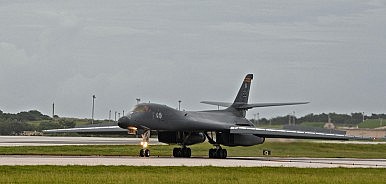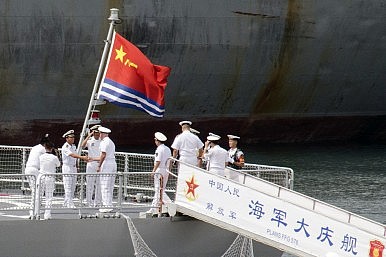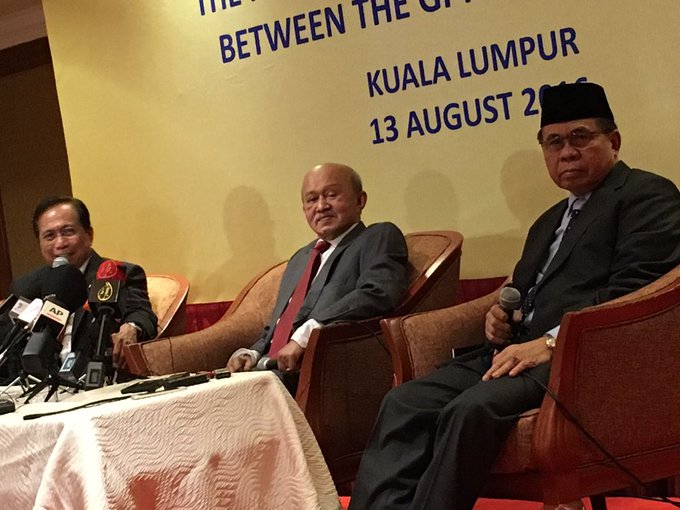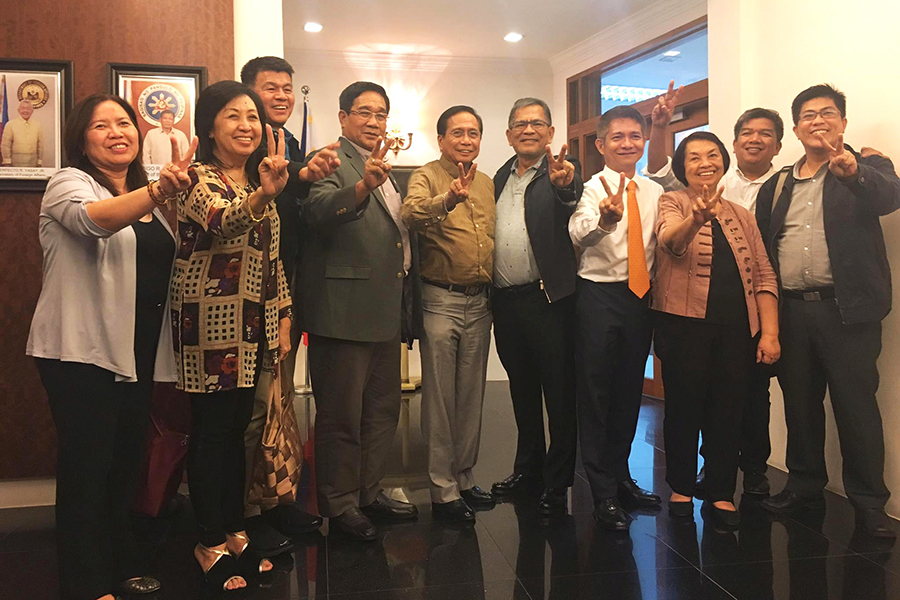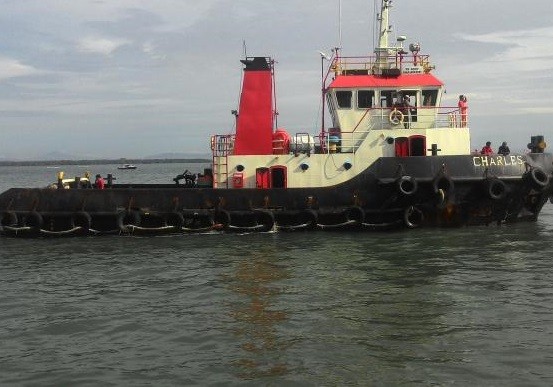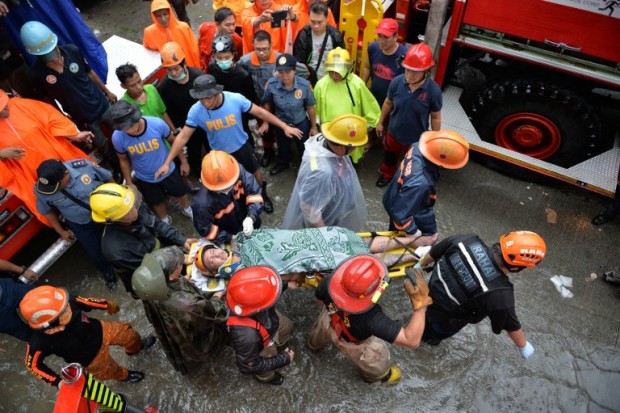The Islamic State (IS) has lost another major city—the
strategic city of Manbij in northeastern Syria Fallujah , after
being driven from Tikrit, Ramadi and Baiji months earlier, while Syrian
government troops liberated the ancient city of Palmyra Palmyra , has also significantly reduced its territorial
stretch in Syria
Just two years ago, nobody had seriously questioned IS’s viability;
the overwhelming global concern was how to contain or degrade it, with
President Obama declaring a
perpetual war against it in September 2014. The anti-IS war efforts of the
U.S.-led and Russian-backed coalitions have not routed IS so far, but they are
dealing a massive blow to its much publicized goals and promises—uniting all
Sunni Muslims from Spain in Europe to Indonesia in East Asia, elimination of
U.S. meddling and Western influences from Muslim lands, restoration of Islamic
power under a single caliphate to reclaim global leadership, and so on. Al
Qaeda, the Islamic State’s parent organization, once had similar pipedreams,
which over time got lost in the quicksands of the Arabian deserts. For a
multiplicity of reasons, the Islamic State promises to do no better than Al
Qaeda.
The Caliphate Runs into Difficulties
The Islamic State is the second of the two caliphates the
Sunni Arabs have declared following the abolition of the Ottoman
Empire in 1924. Sharif Hussein bin Ali of Mecca, King of
present-day Saudi Arabia’s Hejaz province from 1916 to 1924 and a man with a
profound sense of betrayal by the British after WWI, declared the first
post-Ottoman caliphate in March 1924. His caliphate survived less than two
years, being finally crushed by his rival King Abd al-Aziz ibn Saud, the
founder of Saudi Arabia
Al-Baghdadi, the self-styled caliph, made a stunning speech
on the day the Islamic State was declared. He divided the whole world into two
mutually opposed camps—the camp of Islam and faith, and the camp of
disbelief and hypocrisy, thus adding a new religious dichotomy to the already
existing secular categories of capitalist vs. non-capitalist, North vs. South
or developed vs. developing world. He put fellow Sunni Muslims, who would
support his caliphate, in the camp of faith; the Jews, the Christians, the Shia
Muslims and peoples of other non-Islamic faith traditions were branded
disbelievers and hypocrites, whom the Islamic State must fight to survive. What
his religious typology meant in practice was that almost everyone, every power
on earth, was to be an enemy of his new caliphate, not by default but by his
choice. Shia Iran soon
perceived the Islamic State as an existential threat; the United States saw it as a credible rising threat
to its traditional economic and strategic interests in the Middle
East ; and Sunni Saudi Arabia identified it as a menace out to
bring down the al-Saud establishment. Naturally, the revulsion was
great—leading to a closing of ranks between former rivals and coordinated
military actions to destroy the Islamic State, as vividly
testified by the Iran–United States “frenemy” relationship.
In his speech, al-Baghdadi also underscored the need for
caliphate and Sharia (Islamic law). He
averred: “The establishment of a Caliphate is an obligation. The religion
cannot be in place unless Sharia is established.” In the Islamic
religion, however, the concept of caliphate is a contested concept. The Shias
are averse to it, since they reject the first three of the four “Rightly-Guided
Caliphs” and accept Ali ibn Abi Talib, the cousin and son-in-law of Prophet
Muhammad and the fourth caliph, as a legitimate “Imam” (not caliph). The three
other great caliphs—Abu Bakr, Umar ibn Al-Khattab and Uthman ibn Affan, the
Shias say, were illegitimate as they had no direct blood relations with the
Prophet of Islam, nor did they come from the Prophet’s family in Mecca.
Underwriting the Sunni Muslim tradition, Abu Bakr, the first
caliph of Islam, had used the title “Khalifat Rasul Allah” (Successor
of the Messenger of God) that attached a high degree of legitimacy to his
leadership. His successor Umar ibn Khattab was initially called “Khalifat
Abi Bakr” (Abu Bakr’s Successor) but later Amir al-Mu’minin
(leader of the faithful). The third and fourth caliphs had adopted this last
title—Amir al-Mu’minin. Still, as early as the second Islamic century
(eighth century C.E.) the institution of caliphate became a polemical issue. A
group of Mu'tazila scholars (dissenting Muslim scholars known for
their biases for rationalist theology) thought that a caliph would be
unnecessary if Muslims would abide by Islamic religious laws. By the fourth
century of Islam (the tenth century C.E.), after long debates, there emerged a
general conviction that the caliphate was a divinely ordained institution to
provide for sound governance, moral and material welfare of the Muslims. Some
scholars continued to debate whether it was a religious requirement or a
response warranted by sociopolitical realities.
Over time, the institution of caliphate developed some
general attributes—first off, the concept of umma, that all Muslims,
regardless of their ethnic, cultural or linguistic differences, make up a
single nation; secondly, a common feeling of solidarity among the Muslims, what
the fourteenth century Arab historian and thinker Ibn Khaldun called asabiya;
and, thirdly, the idea of God’s sovereignty—a twentieth-century addition that
sharply contradicts the Western system of nation-states, with each government
claiming sovereignty over its defined territorial limits and the people
residing within the territorial limits. Egyptian Islamist Sayyid Qutb chiefly articulated
the concept of God’s
sovereignty in the early 1960s, claiming that since God is the creator of
the earth and the whole universe, only God’s laws, as revealed in the Qur’an,
would govern worldly relations. There is no place for human sovereignty, as
exalted in the name of Western democracy, in God’s universe. Human sovereignty,
Qutb firmly upheld, was contradictory to God’s sovereignty—a rebellion against
the laws of God. Inspired by Qutbian radical ideas, the Islamic State and its
parent organization Al Qaeda are out to establish God’s sovereignty by reviving
their much dreamt Islamic caliphate. Muslims worldwide, however, neither
practically make up a single nation (umma) nor are most of them after
the restoration of a caliphate.
The Islamic State, as it stands now, is a caliphate without
Muslims, not to talk of the umma. Most Muslims feel neither any
religious nor political affiliations with it; rather, they view it as a big
troublemaker for the Muslim community worldwide. If public opinion surveys are
any indicators, the Islamic State represents neither the Muslims nor Islam. A
recent
opinion poll by Pew Research Center ,
conducted in early 2015 in a dozen states with significant Muslim populations,
found that most interviewees had strong distaste for the Islamic State (Lebanon
99 percent; Jordan 94 percent; Nigeria
66 percent; Indonesia 79
percent; Turkey North Africa , reports similar findings.
Most young Arabs reject the Islamic State, which they believe, would fail to
establish the caliphate. Over 50 percent Arab youngsters see it as the biggest
problem facing the Middle East , up from 37
percent in 2015, while 77 percent are concerned about its rise.
Clearly, the Islamic State has no social or political base
that can uphold and defend its mission and objectives. Currently, less than
8 percent of Sunni Muslims support it, while non-Muslims have deep disdain
for it. The Iraqi and Syrian refugees, freed from harsh IS rule, also complain
of atrocities committed by IS fighters. What has caused the Islamic State to
lose popular Muslim support are the methods of extreme violence, indiscriminate
killings, suicide bombings, rape and enslavement senselessly used against the
Shia Muslims and the non-Islamic ethnic and cultural groups. The UN, deeply
shocked by the spate of atrocities against the Yazidis by Islamic State fighters,
has recently accused it of
committing genocide against the Yazidi community that practices a
non-Islamic faith. Islam does not support such crimes against humanity. Even
thousands of
Sunni Muslim clerics from across the globe, disturbed by IS’s destructive
activities, have issued a fatwa (nonbinding religious edict) in December 2015
declaring it a terrorist organization and its supporters non-Muslims.
The global image of the Islamic State caliphate is the image
of a terrorist organization, caliph al-Baghdadi likes it or not. It continues
to wage an all-out war on religious, ethnic and cultural diversities in the
name of Islam, but only at the cost of its self-destruction. Such a war runs
counter to the spirit of Islam and what God has revealed in the Qur’an. Several
verses in the Qur’an (5:32, 5:48, 11:118–9,
10:99–100 & 49:13, for example) forbid violence,
blood-shedding, and instruct Muslims to accept and live with diversities in
religious faiths. Muslims are also forbidden to fight and kill each other.
Contrarily, the Islamic State, through its war on the
Islamic minority groups, Shias and Sunnis alike, is trying to reduce Islamic
political, philosophical, sectarian and theological multiplicities, developed
over hundreds of years, to
a single ultraconservative brand of Sunni Islam, what appears to be a
stricter version of the Wahhabi interpretation of Islam the Sunni Gulf Arabs
follow. Historically, all great Muslim caliphates or empires have accommodated
and tolerated different faith traditions. The Ottoman
Empire , for example, allowed the Jews and the Christians of
diverse denominations to pursue policies to govern their respective community
affairs and personal-status laws, a pluralistic religious approach called the
“Millet System.” The Islamic State mostly repudiates what the Muslims have
achieved in the past, making it anathema to most Muslims worldwide.
What Comes Next?
The Islamic State has fought itself into existence through
military might and its continuous defeat is also a sign of decline in its
military might that seriously dashes its hopes to “remaining and expanding” to
raise the flag of Khilafah (caliphate) over Mecca, Baytul-Maqdis and Rome.
It gained the image of an invincible power in the wake of the summer 2014
blitzkrieg across north and northwestern Iraq
Messianic leaders, true or false, emerge from the whirlwind
of political chaos, massive socio-economic injustices or foreign interventions
causing irreparable damages to local people and their cultures. Ayatollah
Khomeini could hardly carry out a successful Islamic revolution in Iran if the Shah had not pursued secular policies
to dampen the Iranians’ Islamic identity or if the US U.S.
invasion of Iraq Iran
and Saudi Arabia
Independent Iraq, since its creation in 1932 after the
British mandate had formally ended, has been a state, not a nation. The notion
of an Iraqi national identity never took roots, be it for dictatorial rule or
the unusual ethnic, cultural and religious compositions of the Iraqi state.
Inclusive nation-building to foster a sense of belonging together is the way to
permanently overcome the Islamic State problem and close the door to the
emergence of other violent organizations in the future. It is the same case in Syria
[Mohammed Nuruzzaman is associate professor of
international relations at Gulf University for Science and Technology in West
Mishref, Kuwait
http://nationalinterest.org/feature/the-isis-caliphate-collapsing-17338

